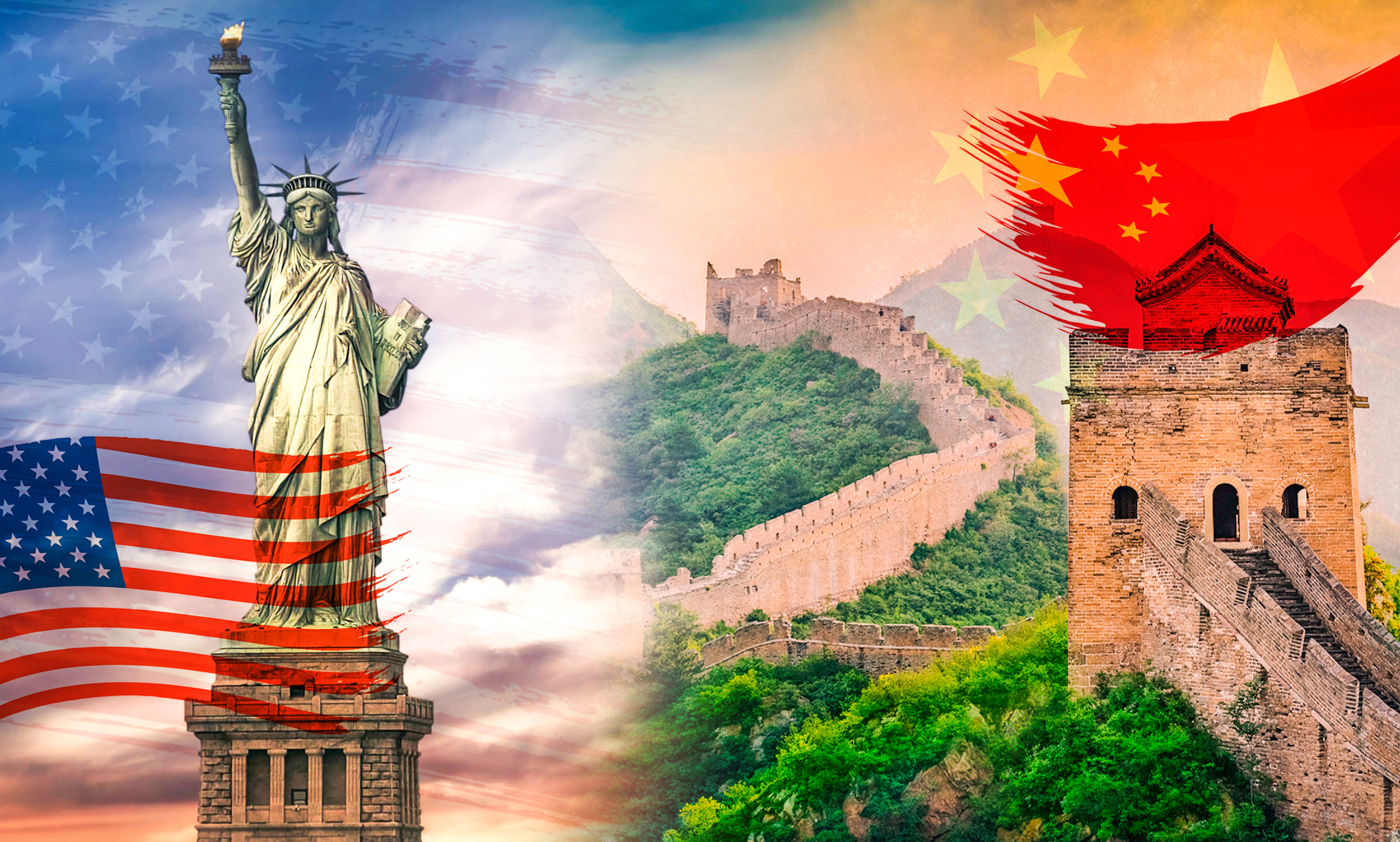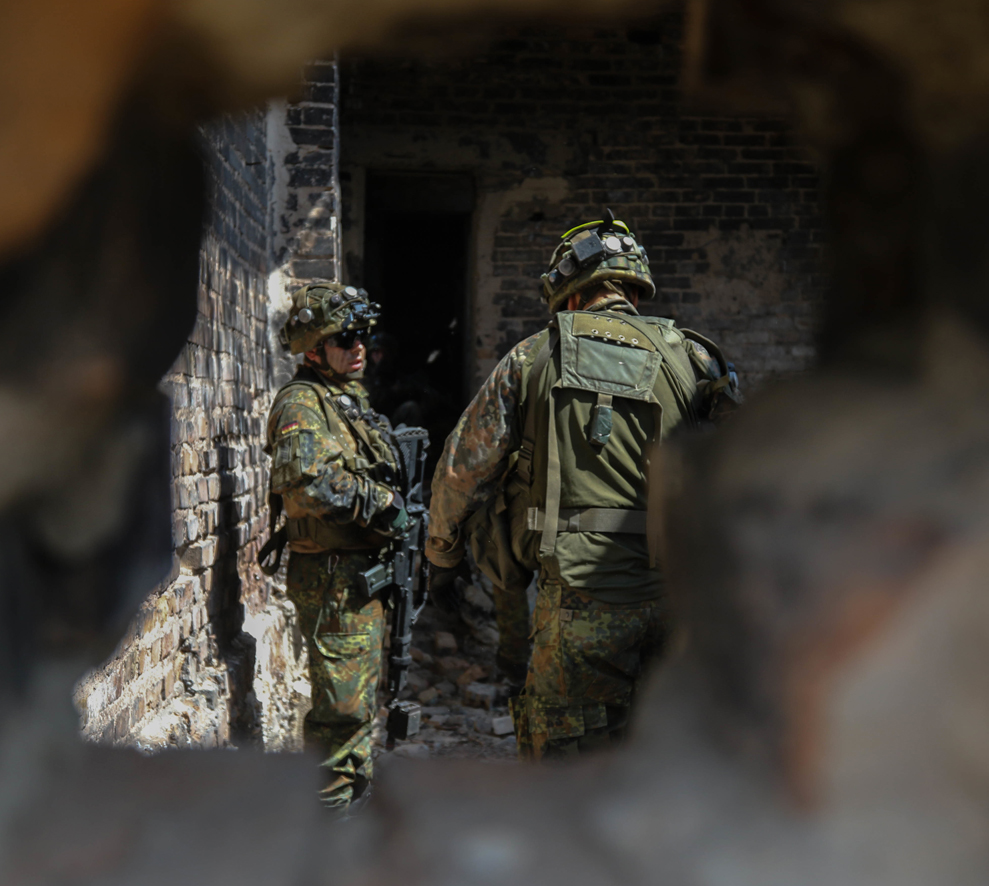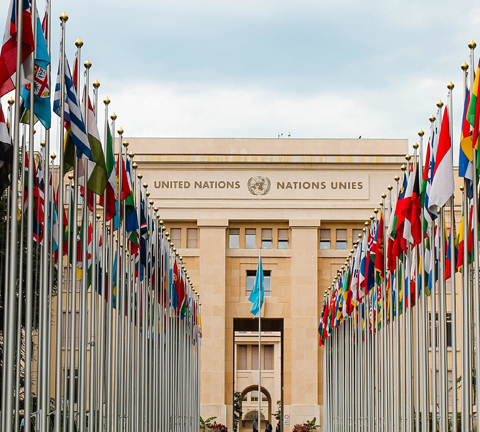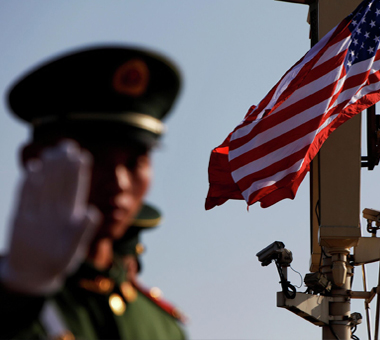International crises have always been one of the key fields of political research, some see it as a justification for reducing escalation, and others believe it is a motivation to increase the already existing tension.
After the Coronavirus pandemic file exploded, and the resulting multidimensional damage at the economic, health, social, and political levels, many professionals and amateurs alike assert that war is inevitable and its outbreak is only a matter of time.
This opinion implies a fundamental fallacy that the field of international relations is difficult to predict due to the impossibility of certainty in assessing international intentions and capabilities of concerned countries. Therefore, it is necessary to move away from the assertion in this field, and instead follow the logical reasoning away from emotions. Every issue has at least two sides, and it is necessary to follow a scientific method that discusses conflicting opinions, without any prejudice or bias.
The escalating anti-China sentiments and the increasing strategic weight of China in the international order are not enough to declare that there is a state of “pre-war tension”. Accusations at the highest levels between China and the U.S. have indeed reached the highest levels, however, they might be a deliberate bubble to distract public attention from the health and economic consequences of the Coronavirus crisis. Even democratic regimes follow the tactic of directing public opinion of voters towards relatively non-major issues, and in this election year for the U.S., such sharp accusations can be explained from this perspective.
This does not diminish the depth of strategic tension between both powers. STRATEGIECS Think Tank published a detailed report, titled "Coronavirus and the Renewed Geostrategic Competition: Will the Pandemic Spark a Nuclear War", addressing the most important features of the competition between China and the U.S.
In this report, we discuss key factors that reduce the possibility of a direct war between China and the U.S., which can be summarized as follows:
First: The Absence of Ideological Enthusiasm
Compared to the race for domination between the West, led by the U.S., and the Soviet Union, the current state of U.S.-Chinese rivalry is considered a "healthy" state of a pragmatic pursuit of vital gains, as "doctrinal propaganda" is absent in favor of a national discourse that does not call for the destruction of the enemy.
Besides, the alliances that China and the U.S. hold with other countries of the world are based on mutual interests, rather than an alliance against a common threat, thereby reducing the severity of political extremism and preserving the possibility of de-escalation.
If capitalist ideology is one of the most prominent features of Western countries, China uses the same tools of capitalism in its external interaction with the rest of the world. The economy and soft power are among the most significant aspects of Chinese foreign policy behavior; there are no special ideological tools that China uses in the international scene. Indeed, it can even be said that at this stage, China is keen to maintain a “rules-based international order” at a time when the importance of international law and multilateral agreements is decreasing according to the current U.S. administration’s perspective and the opinions of many conservatives in support of protectionism, indicating an ideological change, with the U.S. shifting away from globalization and China's moving towards it.
According to the trinity of the Prussian general, Carl von Clausewitz, one of the pioneers of modern strategies (1780-1831), war is the result of the tension between three fundamental elements of both sides of the conflict:
First: The presence of two governments that seek to achieve a political goal behind the forthcoming war and harness all the available capabilities to prepare for war; either at the logistical level or at the level of data collection.
Second: the existence of two populations that have mutual feelings of hostility and share a passion for war as a priority.
Third: The presence of two armies enthusiastic for war for their conviction of the inevitability and necessity of victory.
By applying the Clausewitz model to the mutual relations between China and the U.S., it appears that the two powers are far from a state of war. The government, people, and army of both countries are in a stage that requires solutions to address the consequences of the Coronavirus crisis, away from any ideological fanaticism of war.
Second: Military Deterrence
From a theoretical point of view, the military war expresses a mathematical condition in which the various possibilities for the outcome of the final war are calculated. For the decision to wage any war to be rational, the final equation of (the outcome = gains - losses) must have a positive outcome. Given the growing Chinese military power, especially in the area of weapons of mass destruction, the outcome of the equation will be negative from the U.S. perspective. There are no gains to be achieved from the widespread destruction in U.S. lands, or in the vital U.S. interests surrounding Chinese lands.
The latest annual 136-page assessment of Chinese military capabilities issued by the Pentagon in May 2019 has warned that the Chinese state continues to develop its military capabilities to deter, dissuade and defeat any armed forces seeking to make a large-scale intervention in the "regional area" of China. According to the report, the Chinese military is demonstrating willingness and capability to exercise strengths in the Pacific and beyond.
In this regard, the Chinese "Global Times" published in May 2020 a report, which considered the specter of war is still distant as long as the U.S. is far from achieving a qualitative advantage over China and Russia, so there is no overwhelming advantage of the U.S. capabilities over its Chinese and/or Russian counterparts.
Even the geographical distance factor can be overcome by Chinese military capabilities with classic military techniques. There is a U.S. land about 3 thousand kilometers away from the South China Sea, called the "Guam" island which has a special system in which its population of about 165 thousand people enjoys U.S. civil rights, but they are not allowed to vote in U.S. election per U.S. constitution, ever since Congress approved the island as part of the U.S. in 1950. This island is a U.S. civilian-military base in the western Indian Ocean waters, and with a simple look at Google Maps of the island's location, it can be said that the 7,000 U.S. troops deployed in "Guam" island bases will be in the range of Chinese retaliatory strike, should Washington decide to launch direct strikes on Chinese sites.
Accordingly, there is a near-consensus among experts that the elements of material deterrence are achieved via mutual awareness on both sides of their ability to cause dire war consequences.
Nevertheless, there are high risks related to psychological deterrence associated with intentions, operational calculations, and factors of internal tension that may push a party to act recklessly, causing internal crises.
While it is unlikely that war will break out, there is certainly a qualitative arms race that will rise towards a new stage and with new tools. It shall not seek to cause widespread nuclear destruction to the enemy, as in the Cold War between the U.S. and the Soviet Union. Such a race should be technological, in which the fields of engagement will expand into space and cyberspace, as discussed in the article published by the STRATEGIECS Think Tank in November 2019 entitled (How Can Military Technology be the Decisive Factor in Wars Before their Eruption?).
Among the most ambitious military programs that China is developing is the "Assassin’s Mace", which is designed to interact with military satellites, according to competent military assessments. In March 2017, the Asia-Pacific regional news magazine, "The Diplomat", published a report on the success of Chinese scientists in making an unexpected breakthrough in the "Assassin’s Mace" project by developing a High-Power Microwave Weapons (HPM) that combine the capabilities of soft and hard kill capabilities through the disruption or even destruction of the opponent's electronic systems.
Similarly, the U.S. continues to seek space advantage in this multi-faceted conflict. In a ceremony held at the White House in August 2019, U.S. President Donald Trump announced the establishment of the "U.S. Space Command" as an independent branch of the Air Force, constituting the sixth branch of the U.S. armed forces. According to Trump's statement at the ceremony, the establishment of this leadership aims to preserve U.S. dominance in space and to outpace its competitors, in reference to China and Russia, which in turn warned of the militarization of outer space and of having to reciprocate with equal procedures and measures.
If the deterrence system is effective, in the worst-case scenario, a limited naval clash is expected between the Chinese and U.S. navies, but the "nuclear terror" quickly opens the door to serious negotiations on reformulating the international order, or agreeing to new rules within the same system.
Third: Economic Interdependency
Coincidentally with the onset of the outbreak of the emerging Coronavirus in China, a "Phase 1" trade agreement was signed in January 2020 between Washington and Beijing, which theoretically ended what was termed the "tariff war". Under the agreement, China pledges to purchase $200b worth of U.S. goods over the years (2020 and 2021) in exchange for Washington's relinquishment of a new package of tariffs and the reduction of part of the tariffs previously imposed on some Chinese goods, provided that "phase 1" agreement paves the way for a broader and more comprehensive agreement in which economic and monetary matters may be discussed, not just commercial ones.
Although the U.S. State Department confirmed in a statement issued in May 2020 that the two parties agreed that there was "good progress" in meeting the "Phase 1" agreement, there are increasing doubts related to the ability to fulfill the obligations in the coming months, which could dispel the gains of the initial trade agreement between the two largest economies in the world. Together, they constitute 29.2% of global GDP, according to Trading Economics estimates.
If the essence of the current tension is primarily economic, then the appetite for war is also weakened by the economy, as global economies are in a state of overlap and interdependence, so that what affects a vital economy will necessarily affect the rest of the economies to varying degrees. The Coronavirus crisis emphasized the importance of the flow of global supply chains closely linked to each other, considering that major factories of many large U.S. companies are located in China; as they say: "When the U.S. or China sneeze, the world catches a cold!"
In a clear indication of how global economies are linked to each other, data released by Rhodium in May 2020 stated that Chinese investment in the U.S. fell sharply to $200m in the first months of 2020, compared to an average of $2b in every quarter of 2019. The General Administration of Customs in China revealed that China's global exports decreased in the first quarter of 2020 by 13.3% compared to the same period in 2019.
China also holds about $1.1t of U.S. government bonds until the beginning of 2020. These bonds are indeed a leverage paper by which China can pump U.S. bonds to markets in a way that exceeds demand, leading to the collapse of the value of these bonds and impacting the dollar’s exchange rate against major currencies. However, any change in the dollar would make U.S. bonds economically infeasible for China, and would further weaken the preponderance of the US-China trade balance, which is now clearly in favor of Chinese exports and in favor of the Chinese Yuan's value suitable for the Chinese export situation.
The most important economic factor that may weaken the possibility of war is the economic cooperation between China and Europe whose relationship with Washington is witnessing fluctuations and growing doubts regarding the extent of the commitment of U.S. President Donald Trump to Washington's historical approach towards Europe. The Western contrast was evident in the signing of European countries such as Britain and Italy for deals related to the fifth generation networks with the Chinese company Huawei. The Chinese company has been a source of Chinese-U.S. tension after U.S. President Donald Trump issued a presidential decree in May 2019 imposing sanctions on the Chinese company on the back of U.S. national security risks, such as espionage and information theft.
The above raises a serious question: How can Washington start a military war against China, when some of its "NATO" allies, are concluding deals with a company that the U.S. earlier placed on the black security list?!
Of course, the Coronavirus crisis has negative complications on US-China economic relations, especially with U.S. President Donald Trump's explicit request to Beijing to pay huge economic compensation due to the outbreak of the virus on U.S. soil, as he accuses China of failing to contain the virus, and not taking serious steps during the early stages of infection in China, not to mention withholding medical information about the virus. The U.S. intentions may not be serious in obtaining compensation from China - given the presence of legal and political difficulties - but they may be willing to escalate the tension with China to exert pressure on Beijing to improve its negotiating position in the coming stages, thus ensuring the expansion of U.S. economic gains.
Fourth: Controlling International Order
Historically, the great powers that politically dominate the majority were few, hence, this elite segment usually confines its internal differences and seeks to encompass them. In the end, these countries almost agree on a style and pattern to deal with the rest of the world. Therefore, even if their mechanisms and goals differ, their purpose is the same, which is gaining strategic momentum and international influence throughout the world, even if it is at the expense of the interests of small and medium countries.
It can be said that the deep state takes advantage of an external danger - or a scarecrow - to maintain internal cohesion of sort. When people sense an external threat, they automatically surround the constitution and political symbols. Given the internal challenges facing both the U.S. and China, this requires an "emergency exit" for internal crises to employ external tensions to control domestic political disorder.
Moreover, both countries play a key role in controlling their allies, which contributes, increasing cooperation in vital files. For instance, the U.S. sanctions imposed on North Korea would not have succeeded in pushing the North Korean President, Kim Jong Un, to negotiate with the U.S. administration, had it not been for China's pressuring its neighbor with which it has close economic relations to the point where some considered China to be North Korea's main artery.
Consequently, in the absence or retreat of either country from the international scene, the other country will face a dilemma in persuading - or forcing - its allies to adhere to the red lines of the international order. Therefore, the U.S. and China may move to redraw the lines of engagement, through sharing influence along vital regions and hotbeds of tension, to maintain international order. Theoretically, certainty increases when the international order is bipolar, not multipolar, or in a state of a leadership vacuum. International relations are characterized by the momentum that calls for "senior" presence to ensure the peaceful conduct of the foreign policy pursued by other countries.
Leadership Burdens
Surely, the Coronavirus crisis will cast a shadow over the turbulent economic situation even before the crisis. Given the severe vulnerability of the U.S. to the spread of the virus, and the growing supporters of the need to mortgage foreign policy return with the gains made, the high cost of U.S. foreign policy may push crises and disorder inward and not to adopt costly means to achieve U.S. foreign goals.
China acknowledges that it does not possess a cultural balance to conquer the world, as there is no appetite for learning the Chinese language or studying in Chinese institutes or famous Chinese restaurants such as “McDonald’s,” nor does it have a “Hollywood” through which it can dazzle the world screens. All these and other factors complicate China's mission to persuade the world of its right to exercise the role of global leadership.
The appeasing Chinese culture also tends to avoid rough interactions with different civilizations, and the Great Wall of China may be the clearest picture of what constitutes the Chinese collective mind. Despite the large lands and its possession of the power elements at the time, China chose to adopt the defense strategy and fell behind a wall to protect itself from the invasion of surrounding forces.
If China’s weight changes relatively in the international arena, it will remain trapped in a great wall that seeks to expand economically and weave a silk road without seeking to initiate a war, especially with a mighty U.S. force that has enough military arsenal to destroy the globe many times.
It should be recalled that in the second half of the twentieth century, the international order went through a state of political turmoil and ideological rivalry between its Western and Soviet poles, where expert estimates did not address the possibility of war, but rather the date of the outbreak of this war. Nevertheless, solid diplomacy managed to defuse more than one crisis, and the two sides maintained the clash on the outskirts of the "red lines" without sliding into a direct war.
Likewise, it can be said that there is a cold war with new instruments and no ideological enthusiasm, raging between the U.S. and China, accompanied by an arms race of another kind, whose pillar is not based on nuclear weapons but rather on technology and economy. This excludes the specter of Mutual Assured Destruction (MAD) and encourages the only path to salvation manifested in Mutual Assured Development (MAD).
To make this long story short; the specter of the Great War was never far from modern political history, yet, predictions that assume such an outbreak is approaching should be careful in considering the other half of the story. Not every extreme escalation is followed by war, but most of it is followed by a negotiating table where powers share whatever they can. Hence, all that can be said about the possibility of a U.S.-China war is to remain in the category of assumptions and not that of recognized imperatives.
Keep in touch
In-depth analyses delivered weekly.












